| Vintage Pulp | Apr 26 2024 |

Every top notch private investigator knows the best clues are found in bed.

We wanted to show you another poster painted by John Solie, who was responsible for numerous blaxploitation, sexploitation, and action promos, all executed at the extremely high level you see here with his one sheet for Stacey. His other notable efforts include those for The Arena, Star Crash, Hit Man, and Hollywood Boulevard. You can click his keywords at bottom to see everything we've shared from him.
Naturally we watched Stacey and it's a cheesy detective tale starring erstwhile Playboy centerfold Anne Randall, who plays a model-turned-private dick hired to investigate a rich woman's extended family before any of them are allowed to be included in her will. Randall arrives just in time for intrigue and murder. Private investigators need to possess a Class C license in order to legally take on clients. The C on Randall's license probably stands for “casual sex.”
Even so, there's not much here. The detective elements are uninspiring despite a noir style voiceover, and the sexual elements, even with Randall and co-star Anitra Ford in occasional undress, are not going to blow your skirt up. To put the overall nothingness of the movie in perspective, consider the fact that we couldn't find a copy with sharp enough resolution to make screenshots worthwhile, nor enough official production photos to make them worth sharing. That's how much of a historical afterthought it is.
In lieu of imagery you could use your imagination, but we recommend not bothering. Stacey resides at the low end of grindhouse cinema characterized by numerous bold and outrageous entries. In our opinion it's notable only for being the first exploitation effort by director Andy Sidaris, who would go on to helm boobalicious ’80s throwaways such as Malibu Express, Hard Ticket to Hawaii, and Savage Beach. Stacey premiered in the U.S. this month in 1973.

| Vintage Pulp | Nov 23 2023 |

Temperatures rise and tempers fray in Ard thriller.
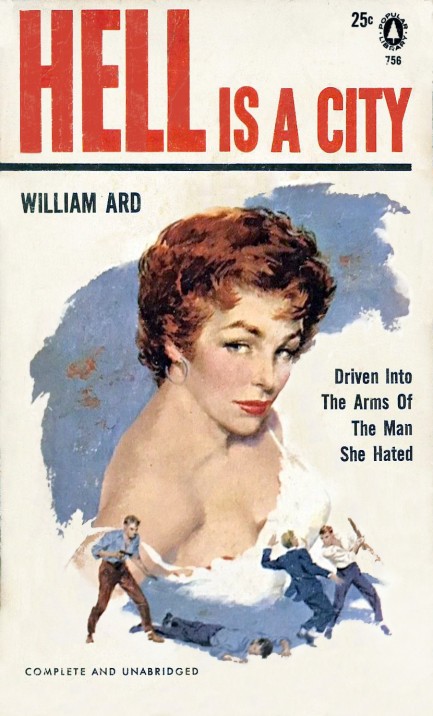
We've been searching for everything we can find by William Ard because his books have been consistently good. This Popular Library edition of 1955's Hell Is a City has George Mayers cover art. We dove right into it, and the narrative (which is unrelated to the movie of the same name) focuses again on Ard's NYC private investigator Timothy Dane, who this time tries to prove that a slam-dunk murder charge is a frame put together by a predatory cop.
Ard reveals this in chapter one, when young Jamie Colyero, barely more than a boy, shoots the cop who tries to rape his sister Rita. The cop had been after her for weeks, and finally plants heroin on Jamie, engineers an arrest, then tells Rita the charges can possibly dropped if she meets him at a hotel and gives up her goodies. Out of desperation to help her brother, she agrees.
Unbeknownst to her, she's followed to the hotel by her brother, who's out on bail, and Jamie kicks in the door and ruins the cop's plan—lethally. Dane is in the picture shortly thereafter, working for a newspaper editor who wants to expose the lies of a rival sheet that has used its pages to turn the dirty cop into a saint. All of this will swing the next mayoral election, so the stakes are as high as can be.
Long story short, the book is great. Like other Ard tales it moves exceedingly fast for a piece of vintage fiction, racing through numerous twists and scrapes, with intermittent bursts of action, until it reaches a conclusion that shakes the city to its foundations and leaves readers satisfied. If you enjoy 1950s crime novels, read anything by Ard. You won't regret it.
| Vintage Pulp | Oct 23 2023 |

For her taking risks is just feline nature.
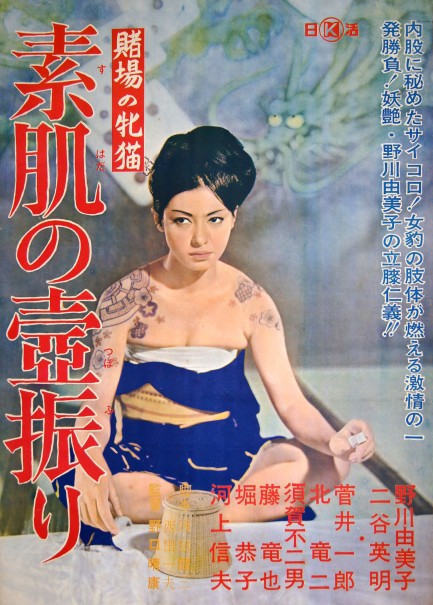
This poster was made for Toba no mesu neko: Suhada no tsubo furi, known in English as Cat Girls Gamblers: Naked Flesh Paid into the Pot, the second of three Cat Girls films. We shared a poster for the first back in 2014 before we could access the movies, but now we have them, so we screened part two last night. The lead in this and the other installments is Yumiko Nogawa, who plays a wandering gambler whose murdered father was a famous maker of rigged dice. After Nogawa's lover is killed in a dice game she swears never to play again, takes a job working at a Turkish bath, and seems to be dedicated to living a quiet existence.
But her idyll is turned upside down when she shelters a recently paroled criminal who wants to gain control of a yakuza territory he'd been promised before going to prison. The crime boss currently running the territory has no intention of giving it up, and Nogawa seems likely to be dragged into the middle of the conflict. As it turns out, she's working in the Turkish bath only as a means to find her father's killer. Since her interests and those of her new friend are aligned, they hatch a plot that just might give them both what they want.
This is a solid effort from Nikkatsu Studios, before the front office bigwigs had their roman porno revelation and leaned hard into sexploitation for the entire 1970s and beyond. Shot in black and white, the feel is arthouse, with a police subplot giving it shadings of an American detective drama. Nogawa, a movie veteran who began her career with 1964's famed Nikutai no mon, is self-assured as the headliner, and the entire supporting cast is good. A climactic fight perhaps won't seem convincingly choreographed to modern viewers, but we recommend taking a chance on this gambling drama anyway. Toba no mesu neko: Suhada no tsubo furi premiered in Japan today in 1965.
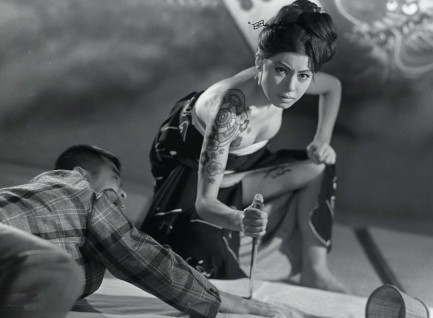

| Femmes Fatales | Sep 15 2023 |

Laced up tight and ready for action.

British actress Jacqueline Jones appears in the above promo image made for 1965 her comedy/thriller The Intelligence Man. Jones accumulated about forty credits during her career, appearing in such movies as Jungle Street Girls and The Cool Mikado, and on television shows such as The Avengers and The Scales of Justice. This is a great shot, bouffant hair, lace top, pink background, and all.
| Vintage Pulp | Aug 12 2023 |

Zero to crazy in under ninety minutes.

We first shared a poster for the pinky violence movie Sukeban gerira, aka Girl Boss Guerrilla, years ago and said at that time we'd get around to talking about the movie. We subsequently shared a tateken style poster, but still didn't get around to the film itself. Well, it's finally later. Eleven years later, to be exact. We refreshed our memory with a new screening last night, and to accompany today's thoughts we're sharing a rare bo-ekibari style poster of this classic pinky violence actioner from Toei Company.
Miki Sugimoto and three friends, who comprise the small but spirited Red Helmet Motorcycle Gang, take a trip from Tokyo to Kyoto to see if they can hustle up some yen by whatever means they can manage—grifts, graft, blackmail, whatever. They make some cash but quickly run afoul of Ryôko Ema of the Kyogoku Group, head boss of all Kyoto's girl gangs, which leads to a Ryôko-Miki showdown for control of the city. Our advice: never fight in flip-flops. But then again, we're not as tough as Miki. She loses her flip flops, but wins the fight.
There's always a set of bad men in the background of a pinky violence movie, and it turns out that though Kyoto's girl gangsters are now under Miki's hard won control, all operate under the umbrella of the Tsutsui Gang, who are basically the Kyoto branch of the yakuza. Miki has to give regular tribute to the boys, obey the rules, or pay the price. She's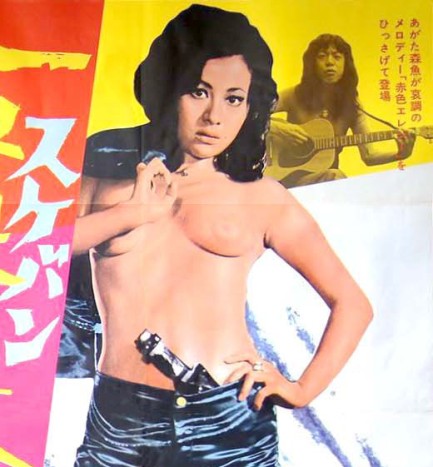
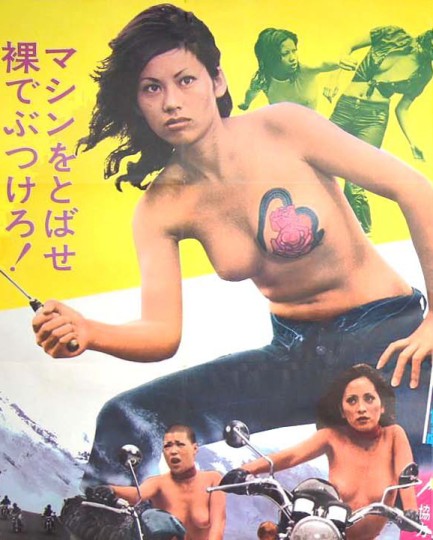 willing to toe the line, but her situation is quickly complicated when she makes a new pal played by Reiko Ike, who's disinclined to obey anybody, but particularly the local yakuza clan, one of whose higher ups is her big brother.
willing to toe the line, but her situation is quickly complicated when she makes a new pal played by Reiko Ike, who's disinclined to obey anybody, but particularly the local yakuza clan, one of whose higher ups is her big brother.

 willing to toe the line, but her situation is quickly complicated when she makes a new pal played by Reiko Ike, who's disinclined to obey anybody, but particularly the local yakuza clan, one of whose higher ups is her big brother.
willing to toe the line, but her situation is quickly complicated when she makes a new pal played by Reiko Ike, who's disinclined to obey anybody, but particularly the local yakuza clan, one of whose higher ups is her big brother.Along the way to settling this mess you get fights, captures, torture, and nudity. Comedy and romance are part of the equation too, as is a bit of social commentary (a Red Helmet girl picking up gonorrhea from a priest is particularly biting). In the end a final throwdown is inevitable but how it turns out is anyone's guess. Nothing is guaranteed in a pinky violence movie—well, except violence.
Pinky violence movies can be fun, but the misses tend to be well wide of the mark, if not psychologically disturbing. Sukeban gerira is a nice example of the genre. It's wild, but never quite to the extent that it makes you want to run from the room. An excellent moment comes just a few minutes in, when Sugimoto aggressively bares a tattooed breast at a set of macho assholes, causing them to physically recoil. That sums up the best pinky violence: a new brand of feminine power that overcame any opposition set against it. Sukeban gerira premiered today in 1972.


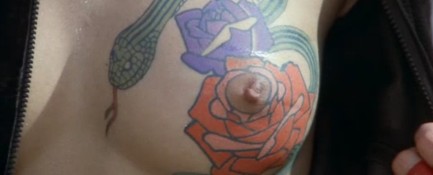
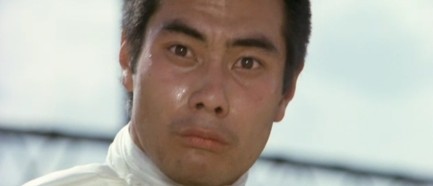

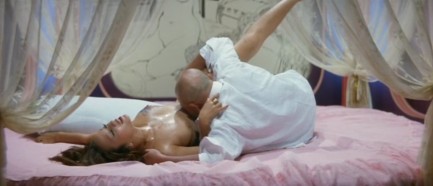


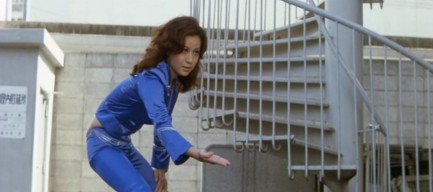
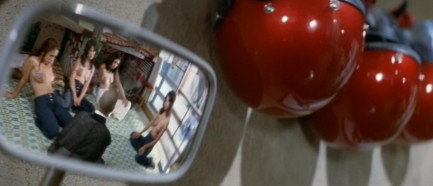


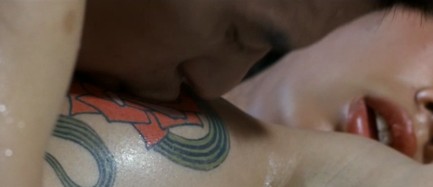
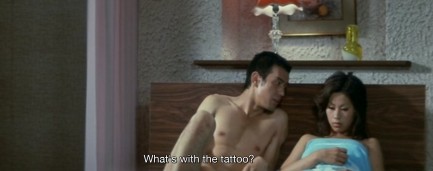

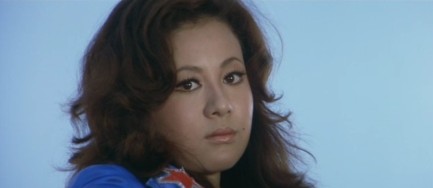


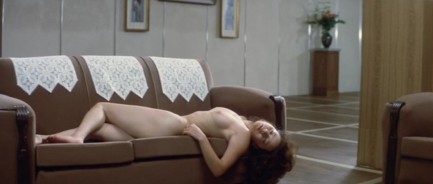
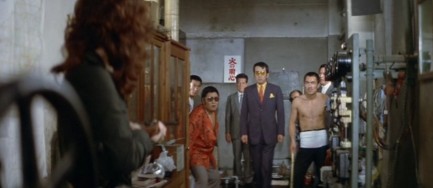






















| Femmes Fatales | Apr 28 2023 |

We deal in human slaughter. But when the killing business is slow we also hire out to open Champagne bottles at parties.
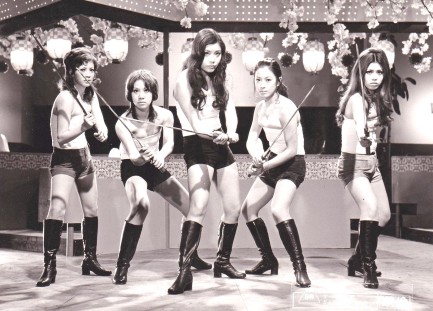
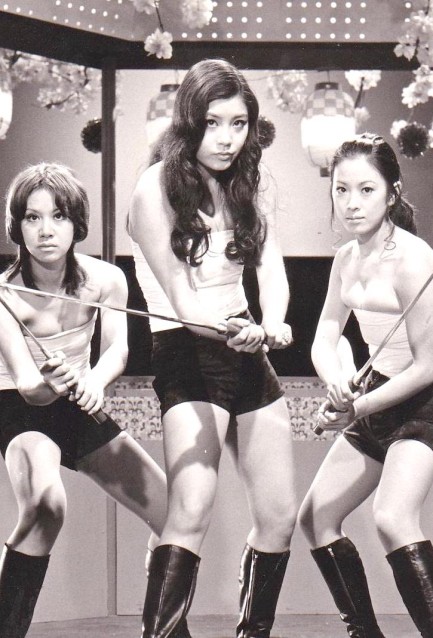
We ran across this menacing promo image online showing the titular quintet of delinquent girl bosses from Delinquent Girl Boss: Worthless To Confess, originally titled Zubekô banchô: zange no neuchi mo nai, and which premiered in Japan today in 1971. Reiko Oshida is front and center, flanked by Yukie Kagawa, Mieko Tsudoi, Masumi Tachibana, and Yumiko Katayama. We've shared plenty of promo art from the film, and discussed what it's about. You can see all that by clicking its keywords below. And if you get the urge to be trendy and open a Champagne bottle with a sword, try to do better than these people.
| Vintage Pulp | Mar 27 2023 |

Why are our uniforms are so tight? Why is it so hot in here? Why does the warden carry a riding crop?
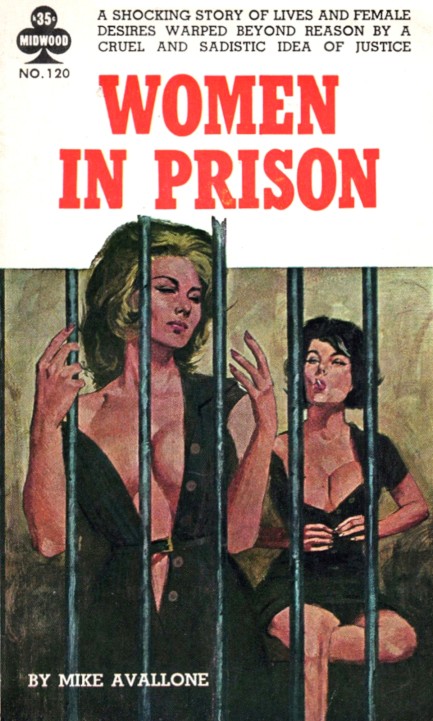
The answer to all of the above questions is: It's a women-in-prison novel. There are variations with these, though. The warden might might favor a sharp tongue over a riding crop. The temperature might be warm to encourage stripping, or cool to encourage sleeping in huddled groups. In all cases, however, the cavity searches last way longer than needed to find secreted contraband. Mike Avallone later went on to write some reputable books, but he'll always be remembered for his sleaze, especially this one and his all-time classic Sex Kitten. You can get more of an idea what the book is about from the rear cover, just below. We've read enough of these novels to satisfy our curiosity, so we took a pass on this one.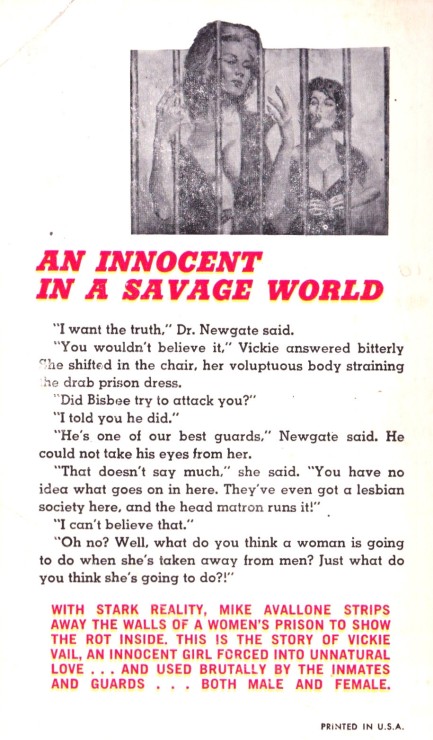
| Vintage Pulp | Feb 16 2023 |

The fundamental things apply whenever Hitomi comes by.

Yes, we just saw Hitomi Kozue last week, and here she's popped up again in the 1974 sexploitation flick Zoku tameiki, which translates as “continuous sigh,” but was called in English Sigh 2. And indeed, the movie is positioned as follow-up to 1973's Tameiki, aka Sigh, though that film starred Yumiko Tateno. In this one, Hitomi plays an office worker who's willing but frightened to lose her virginity and manages to get tangled up with her mother's ex-lover. It's Nikkatsu Studios once again exploring unlikely sexual dilemmas, with the usual array of pervs, stalkers, and aggressors dragging down the film's erotic aspirations. That doesn't mean there aren't a few stirring scenes. We rather enjoyed when Hitomi checked out her pieces-parts with a hand mirror.
Some reviews of Zoku tameiki say it's about intergenerational issues. Well, sure, they're in there. Issues will arise when daughter and mother bed the same guy, and there are suggestions of daddy issues in Hitomi's fears about embarking upon sexual life, but we're not buying this as any kind of deep rumination, intergenerational or otherwise. What it is, when you boil it down, is a standard roman porno flick that makes less-than-adequate use of Hitomi Kozue's presence. As always, she does fine in her role, is amazingly beautiful, and is convincing as a shy girl, but we were unmoved by the script and nonplussed by several comic interludes. The movie isn't bad. It's merely that its only true asset is the radiant Kozue. For some viewers, us included, that's enough, but the filmmakers should have done a bit better. Zoku tameiki premiered in Japan today in 1974.


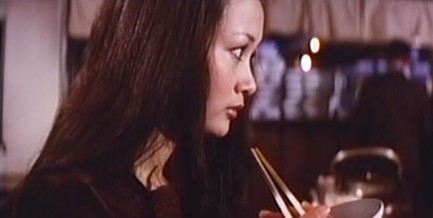

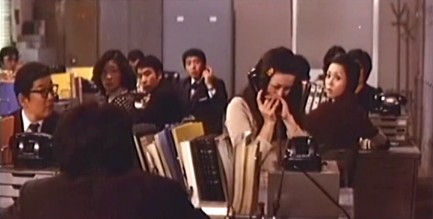
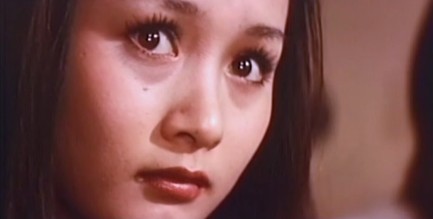

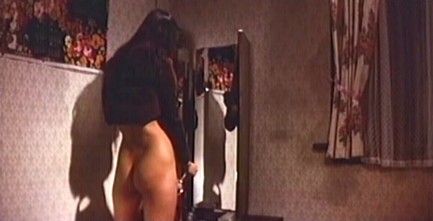
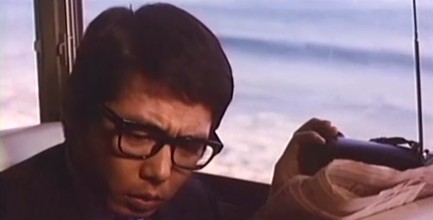
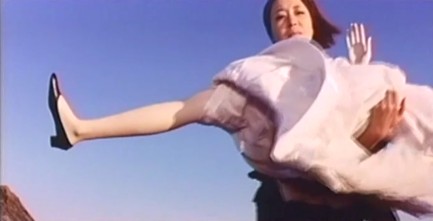










| Femmes Fatales | Jan 25 2023 |

Whew! I'm getting tired. But there you have it—the letter Y. Next up is my finale—the letter Z!
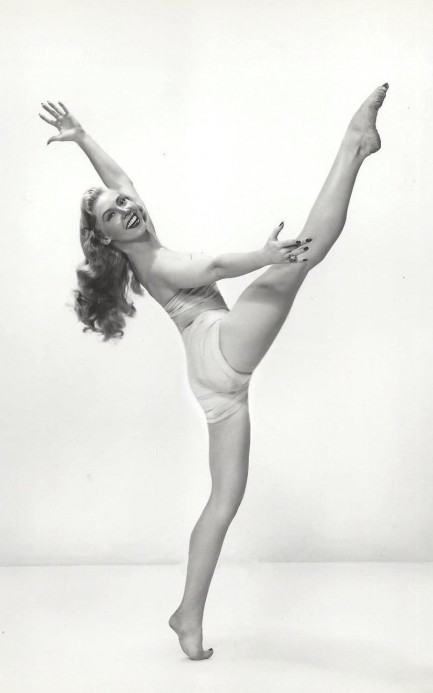
Georgine Darcy shows her dancing flexibility in this promo image made in 1954, around the time she was making her debut in Rear Window. She appeared in a few other films, among them Women and Bloody Terror, and guested on about a dozen television shows—Mike Hammer and Peter Gunn come to mind—but she'll probably always be remembered as Miss Torso from Hitchcock's classic. The only thing is, they should have called her character Miss Everything, because she's got it all.
| Modern Pulp | Jan 23 2023 |

The lady is a tramp, and the director is a scamp.

Junko Mabuki is back on Pulp Intl., as you see on this poster for the roman porno movie Dan Oniroku OL nawa dorei, known in English as Office Lady Rope Slave. It premiered in Japan today in 1981, and basically, Junko plays a straight-laced nine-to-fiver who gets involved with a pair of bondage fetishists. These types of films were, of course, her specialty, and she once again gives viewers everything they'd become accustomed to seeing. But we're less interested in the plot of the movie than the reaction at Japan's censorship board Eiga Rinri Kikō. Adherence to its restrictions was ostensibly voluntary on the part of film studios, but the body had real enforcement power. Dan Oniroku OL nawa dorei must have shaken the place to its foundations.
Let's set the scene. One of the censors has shown up at the Eiga Rinri Kikō office for an emergency meeting with the board chief. He and the other members of the body are proud of themselves for their work, which basically just hews to Japanese obscenity standards by forbidding shots of sex organs and pubic hair. But they never really thought it out from the perspective of directors determined to skirt the edges, which suddenly is happening with increasing frequency. Now at least one censor is in a tizzy. He'd be even more agitated if he knew digital technology would make roman porno films globally available, and thus decades later raise uncomfortable questions about Japanese culture and misogyny, but at this point he has no clue about that.
Censor: I'm beginning to think our censorship regime has backfired. I just screened Dan Oniroku OL nawa dorei and that fucker Katushiko shows dripping semen.
Chief: We didn't ban that?
Censor: No. We overlooked it.
Chief: Well, what's a little semen?
Censor: It's dripping from Mabuki Junko's mouth. He also shows vaginal juices, vaginal blood, and strongly implies that Mabuki-kun gets her clitoris clothes-pinned.
Chief: Hmm... that does sound provocative.
Censor: I watched it twice just to be sure of my eyes. It's depraved. Additionally, there's all the usual bondage, some bizarre insertions, an enema, oral sex both heterosexual and lesbian...
Chief: All this without violating a single one of our rules?
Censor: Nothing is actually shown. It seems quite revealing, though, because, well, Mabuki-kun is a very good actress. Great boobs too.
Chief: Agreed. Mabuki-kun has excellent boobs.
Censor: But in general, it feels like these roman porno directors are ridiculing our censorship standards. There's even a moment—I swear—when I felt like the actors looked directly at me and sneered.
Chief: Now you're being paranoid. Regarding the standards, we could change them, make them more restrictive, but it's hell keeping Nikkatsu and the other studios in line already. Any alteration now may cause serious problems.
Censor: *sigh* But the semen...
Chief: What's a little semen? So, that screener is VHS?
Censor: Betamax. It's a better format. Soon everything will be Betamax. I have it with me.
Chief: I better check it out—just to confirm your findings. Leave it by the Beta player over there, and close the door on your way out. Also, tell my secretary I'm not to be disturbed for ninety minutes.
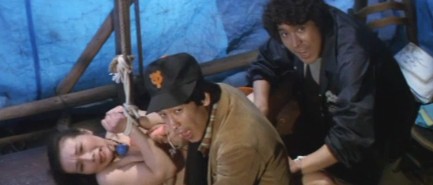 Okay, a scornful look for the censorship board on one... two... and now!
Okay, a scornful look for the censorship board on one... two... and now!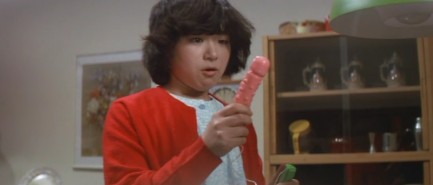 At first I thought this was a citrus reamer, but now I'm not sure.
At first I thought this was a citrus reamer, but now I'm not sure.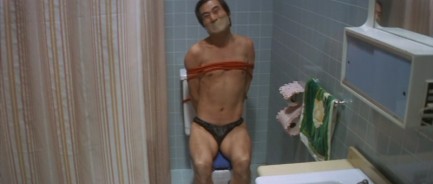 How the hell do you expect me to flush this way?
How the hell do you expect me to flush this way?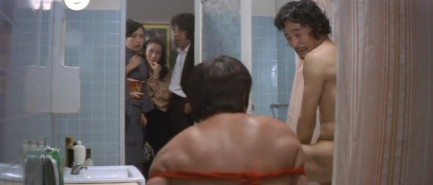 I'll help him. I've been hiding in the shower the whole time.
I'll help him. I've been hiding in the shower the whole time.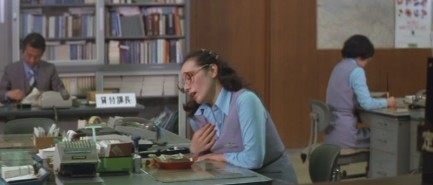
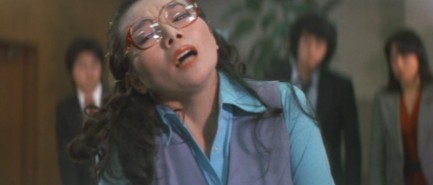 I have to take a short break. There's an office pool on my chair.
I have to take a short break. There's an office pool on my chair.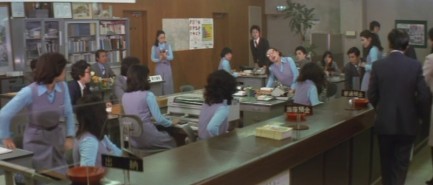 We'll all have what she's having!
We'll all have what she's having!




































































